bolt-on acquisition
description: a type of acquisition in which the acquired company is integrated into an existing division of the acquiring company
11 results
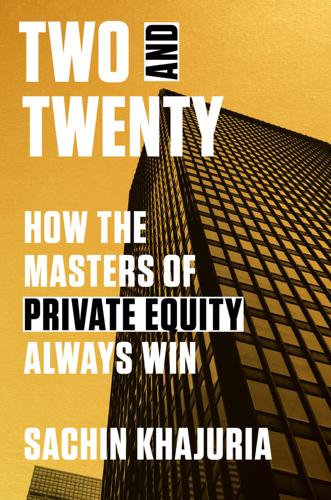
Two and Twenty: How the Masters of Private Equity Always Win
by
Sachin Khajuria
Published 13 Jun 2022
Making twenty percent out of a profitable deal is better than making nothing. A failure has zero profit to share. We review the fundamental attributes of the investment. The company has a strong franchise, with high and stable market share and leading chemical products. Opportunities to grow include executing bolt-on acquisitions and investing in compelling new niches with high-growth potential, such as recycled and biodegradable products. Despite the reductions in headcount, deeper layers of fat are still waiting to be cut. We have upgraded the management team and retained the technical bench of talent, all of whom have a hefty share of their modest net worth at stake on the deal and are locked into compensation plans that only pay out when we exit profitably.
…
Private equity’s success is retirement systems’ gain. What success looks like in private equity is no secret. It involves buying well at reasonable prices. It requires partnering with management teams and independent non-executive directors. It involves transforming and improving the operations of target companies, which may involve making bolt-on acquisitions and executing organic growth initiatives. It involves financing and refinancing investments opportunistically when interest rates and other terms are compelling. It involves exiting well and creatively, in one step or in stages, in such a way that maximizes the blended sale price. It requires assembling a winning combination of most if not all of these deal elements together.
…
From this bottom-up analysis of the revenue order book to the cost structure, every layer of earnings was scrutinized. How predictable is the cash flow? What is the credit rating of the client? Is it essential for the customer to renew? Can pricing be increased during the agreement? When is it renewed and on what terms? Where can we improve costs? Are there other tower assets we can buy as bolt-on acquisitions after this deal closes? Debates raged over assigning a different cost of capital to contracted versus optional revenue, over secure versus potential cash flow. And it was all done with dry wit. The Australians had a point to prove. Having faced hubris and ego from the established operators on Wall Street, the newcomers pushed each other to work harder, think smarter, and act sharper.
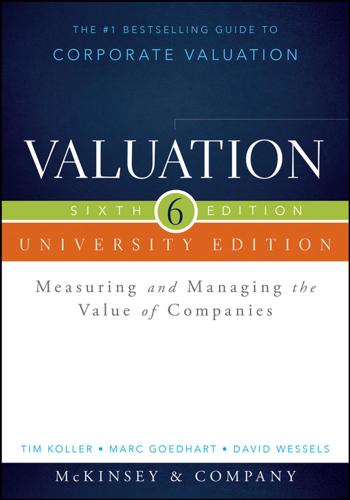
Valuation: Measuring and Managing the Value of Companies
by
Tim Koller
,
McKinsey
,
Company Inc.
,
Marc Goedhart
,
David Wessels
,
Barbara Schwimmer
and
Franziska Manoury
Published 16 Aug 2015
They passed on increases in commodity costs to customers but did not lower prices when their commodity costs subsequently declined. But even they haven’t been able to do the same thing since. There are two main approaches to growing through acquisitions. Growth through bolt-on acquisitions can create value if the premium paid for the target is not too high. Bolt-on acquisitions make incremental changes to a business model—for example, by completing or extending a company’s product offering or filling gaps in its distribution system. IBM has been very successful in bolting on smaller software companies and subsequently marketing their applications through its existing global sales and distribution system, which can absorb the additional sales without too much extra investment.
…
Owing to this innovation’s overwhelming competitive advantage over traditional treatments, as well as over GROWTH AND VALUE CREATION 121 EXHIBIT 7.2 Value of Major Types of Growth Value created1 Above average Type of growth Rationale • Create new markets through new products • No established competitors; diverts customer spending • All competitors benefit; low risk of retaliation • Convince existing customers to buy more of a product • Attract new customers to the market • Gain market share in fast-growing market • Competitors can still grow despite losing share; moderate risk of retaliation • Make bolt-on acquisitions to accelerate product growth • Modest acquisition premium relative to upside potential • Gain share from rivals through incremental innovation • Gain share from rivals through product promotion and pricing • Make large acquisitions • Competitors can replicate and take back customers • Competitors can retaliate quickly Average Below average • All competitors benefit; low risk of retaliation • High premium to pay; most value diverted to selling shareholders 1 Per dollar of revenue.
…
While the acquiring company shows revenue growth, the combined revenues often do not increase, and sometimes they decrease because customers prefer to have multiple suppliers. Any new value comes primarily from cost cutting, not from growth. Furthermore, integrating the two companies requires significant investments and involves far more complexity and risk than integrating small, bolt-on acquisitions. The logic explaining why growth from product market growth creates greater and more sustainable value than taking share is compelling. Nevertheless, the dividing line between the two types of growth can be fuzzy. For instance, some innovations prevent existing competitors from retaliating, even though the innovator’s products and services may not appear to be that new.
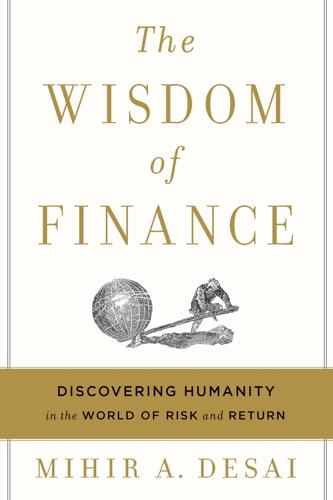
The Wisdom of Finance: Discovering Humanity in the World of Risk and Return
by
Mihir Desai
Published 22 May 2017
In the AOL–Time Warner example, it became clear early on that integration would be painful when they couldn’t even adopt a common email platform. This is also known as “unreasonable expectations are your enemy.” 6. Asymmetric mergers are easy but of limited value, and mergers of equals are horribly difficult but potentially very rewarding: Mergers where one organization dominates another—also known affectionately as “bolt-on acquisitions”—are easy because the dominant organization can simply force changes and savings. But they also don’t occasion that much value creation. Mergers of equals are incredibly hard, given the joint decision making they imply—but they are the only occasions when the logic of 1 + 1 = 3 is even feasible.
…
Robert Levet,” 68–69 Journal of Law and Economics, 115 Joyce, James, 91–92, 161 Jura, 128 K Kafka, Franz, 47 Kant, Immanuel, 154–55 Keynes, John Maynard, 51 Kirshner, Julius, 103 Klein, Francesca, 101 Koestler, Arthur, 128 Koons, Jeff, xi, 8, 127, 129–31, 137, 140–41 Celebration series, 140 effective use of leverage, 140–41 Play-Doh, 129 Popeye, 141 L Laplace, Pierre-Simon, 20 LeFevre, Gregg, 174 Lehman Brothers insolvency, 147–48 Let’s Make a Deal (TV show), 16 leverage, 8 benefits and drawbacks, 123–26, 135 Bentham and Smith conflict on, 121–22 “bonus” of leverage, 137–38 debt overhang, 132–35 definition, 123–24 leveraged buyout, 127 risk and return, 125–27 static trade-off theory, 126 leverage, personal and artistic, 127–30 commitment device, 131, 137–40 connection to debt overhang, 132–35 degree of leverage, 130–32 effective use, 138–39 failure and rebirth, 149–50 life-cycle hypothesis, 135–36 role of reputation, 139–40 Levin, Jerry, 108–11 Levine, Joseph, 93–94 Little Feat, 99 Luna, Elle, 90–91 M Macfarlane, Alan, 24 Mad Max (film), 54–55 Maltese Falcon, The (Hammett), 11 Mann, Bruce, 143, 145, 147 Mao Zedong, 67 Marcus, Steven, 11 Mars, Kenneth, 93 Mariani, Paul, 33 McNamee, Roger, 108 Melville, Herman, 46–49 Merchant of Venice, The (Shakespeare), 8, 120 (illus.), 122–23 mergers, 8 AOL–Time Warner merger mistakes, 109–12 asymmetric mergers (bolt-on acquisitions), 111 Ford Motor and Firestone Tire partnership, 117–18 General Motors and Fisher Body merger, 113–17 Hewlett Packard and Autonomy acquisition, 109 integration planning, 110 mergers of equals, 111 serial acquirers, 111 synergies, 109–10 Merton, Robert, 40 Miller, Alice, 95 Milton, John, xi, 7, 59, 68–69, 74 “When I Consider How My Light Is Spent,” 70–71 Miracle Worker, The (film, play), 96 Miranda, Lin-Manuel, 75 Molho, Anthony, 103 Monte Dei Paschi di Siena, 100 Monte delle doti, 101–4 “Monty Hall” problem, 16 moral hazard, 28–30 Morris, Robert, 142 career, 143–45 financier of the revolution, 143 relative to J.
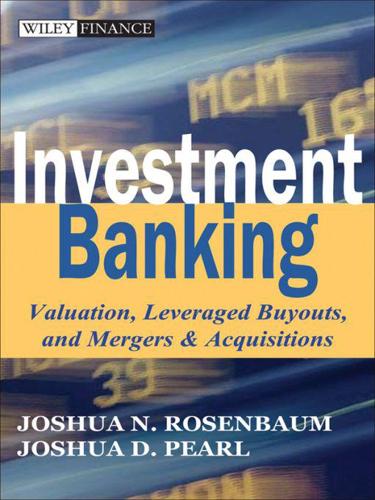
Investment Banking: Valuation, Leveraged Buyouts, and Mergers and Acquisitions
by
Joshua Rosenbaum
,
Joshua Pearl
and
Joseph R. Perella
Published 18 May 2009
During the time from which the sponsor acquires the target until its exit (“investment horizon”), cash flow is used primarily to service and repay debt, thereby increasing the equity portion of the capital structure. At the same time, the sponsor aims to improve the financial performance of the target and grow the existing business (including through future “bolt-on” acquisitions), thereby increasing enterprise value and further enhancing potential returns. An appropriate LBO financing structure must balance the target’s ability to service and repay debt with its need to use cash flow to manage and grow the business. The successful closing of an LBO relies upon the sponsor’s ability to obtain the requisite financing needed to acquire the target.
…
Accordingly, the sponsor spends a great deal of time during due diligence seeking assurance that the target’s market positions are secure (and can potentially be expanded). Depending on the sponsor’s familiarity with the sector, consultants may be hired to perform independent studies analyzing market share and barriers to entry. Growth Opportunities Sponsors seek companies with growth potential, both organically and through potential future bolt-on acquisitions. Profitable top line growth at above-market rates helps drive outsized returns, generating greater cash available for debt repayment while also increasing EBITDA and enterprise value. Growth also enhances the speed and optionality for exit opportunities. For example, a strong growth profile is particularly important if the target is designated for an eventual IPO exit.
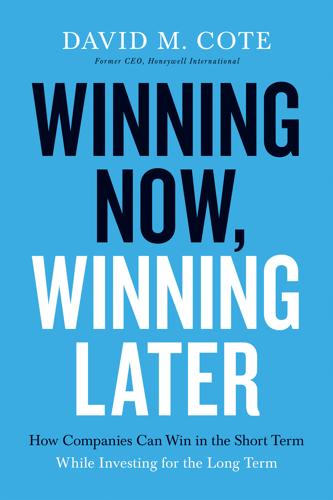
Winning Now, Winning Later
by
David M. Cote
Published 17 Apr 2020
Then you’re looking at highly attractive growth where the return on investment is likely to be strong. Accordingly, we developed the phrase “great positions in good industries” to summarize the kinds of investments we were seeking to make to grow our portfolio. To find the best opportunities, our business units at Honeywell sought to identify desirable bolt-on acquisitions for existing businesses of ours (companies that made the kinds of products that our businesses did), and to identify good industries that were closely adjacent to favorable businesses. That way we would have sufficient expertise to run these companies once they were in our fold. Tracking down these companies and developing deals was painstaking work.
…
Anne used to say that we needed to kiss a hundred frogs in order to find our prince. She was right. To Build a Robust Pipeline . . . * * * •Don’t wait for bankers to knock on your door with potential deals. Instead, scour the market proactively. •Seek out businesses that have great positions in good, high-growth industries. •Look for bolt-on acquisitions as well as companies in good industries adjacent to yours. •Not all perceived adjacencies are the same. If the adjacency is too far removed from your existing business, you will lose your shirt. •Make identifying targets a day-to-day priority. •Be patient. Nurture long-term relationships with potential acquisitions.
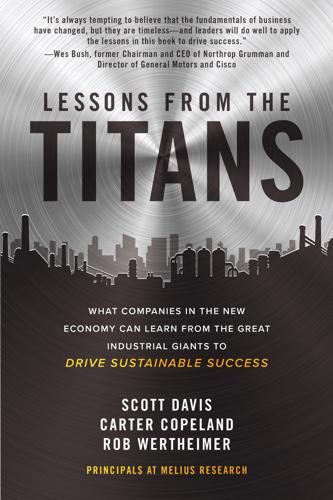
Lessons from the Titans: What Companies in the New Economy Can Learn from the Great Industrial Giants to Drive Sustainable Success
by
Scott Davis
,
Carter Copeland
and
Rob Wertheimer
Published 13 Jul 2020
Welch figured that if he could dump his flashy consumer electronics business and invest the proceeds at a lower price in healthcare, that would be an ideal portfolio swap. Within a year of doing the RCA deal, Welch bundled GE’s and RCA’s consumer electronics businesses and sold them to Thomson, in return for its medical diagnostic business and $800 million in cash. Welch then invested the excess cash in both internal research and bolt-on acquisitions, specifically focused on diagnostics, which became the mainstay of GE Healthcare. That division grew from $1 billion in revenues in 1987 to more than $8 billion in 2001, an astounding 17% annual growth rate. Meanwhile, Thomson struggled for years in consumer electronics against tough global competition, eventually exiting most of the businesses it had purchased from GE at a steep loss.
…
Convincing the board to be aggressive was no easy task. Roper’s legacy board was conservative, and Jellison had not yet been named chairman. His plan was compelling and simple but required a level of change the board struggled with. Many board members flat-out rejected the notion that anything other than smaller bolt-on acquisitions were needed. Several other board members wanted Roper to stick to its core and roll up other pump assets. Beyond the unconventional M&A strategy that Jellison was pitching, he wanted to drive change within the organization itself. He wanted to upgrade management more broadly, run a more decentralized playbook, and change compensation schemes, all of which made the conservative board uncomfortable.
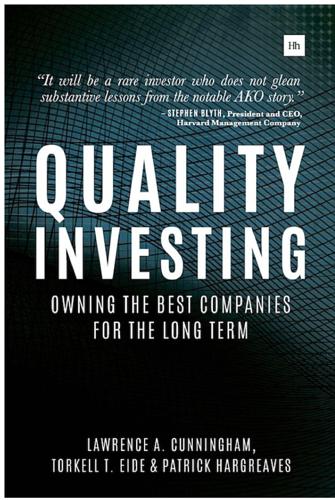
Quality Investing: Owning the Best Companies for the Long Term
by
Torkell T. Eide
,
Lawrence A. Cunningham
and
Patrick Hargreaves
Published 5 Jan 2016
Consolidation of fragmented industries is often an appealing rationale for growth through acquisitions. Such roll-ups, as they are often called, do not invariably succeed,6 but there are several notable examples of successes. For example, Essilor, a global leader in making lenses for eyeglasses, has a long history of small bolt-on acquisitions. Individually insignificant, these have become material in aggregate, adding more than 3% in annual sales per year for the last decade. These purchases are most commonly of local optical labs that give Essilor access to a local customer base and better control of its value chain. Pre-acquisition, Essilor might represent 40% of a lab’s lens sales, whereas after closing, it would double that level.
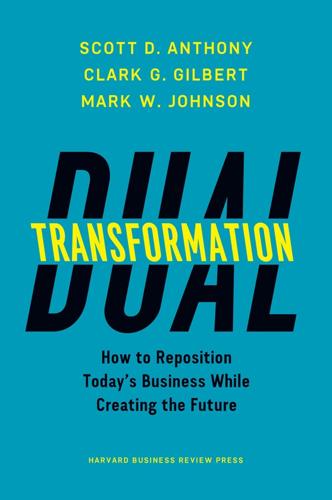
Dual Transformation: How to Reposition Today's Business While Creating the Future
by
Scott D. Anthony
and
Mark W. Johnson
Published 27 Mar 2017
He takes a sip of coffee and looks closely at Bernadette. “But at the same time, I’m not sure he has the full picture. Does he know the board has authorized a billion dollars in spending over the next four years? Or that you have approval to make ten more hires? Or that we’re about to launch a venture capital fund to get an early look at other bolt-on acquisitions?” “How would he know any of those things?” Bernadette says, her voice rising a notch. “This is the first I’m hearing about them!” “That’s my fault,” George responds quickly. “We’re ready to do what it takes to make this happen. Maybe I should start spending a day a week out here without my schedule packed with meetings.

Concentrated Investing
by
Allen C. Benello
Published 7 Dec 2016
And we will regularly grumble about our government. But, most assuredly, America’s best days lie ahead. With this tailwind working for us, Charlie and I hope to build Berkshire’s per‐share intrinsic value by (1) constantly improving the basic earning power of our many subsidiaries; (2) further increasing their earnings through bolt‐on acquisitions; (3) benefiting from the growth of our investees; (4) repurchasing Berkshire shares when they are available at a meaningful discount from intrinsic value; and (5) making an 128 Concentrated Investing occasional large acquisition. We will also try to maximize results for you by rarely, if ever, issuing Berkshire shares.
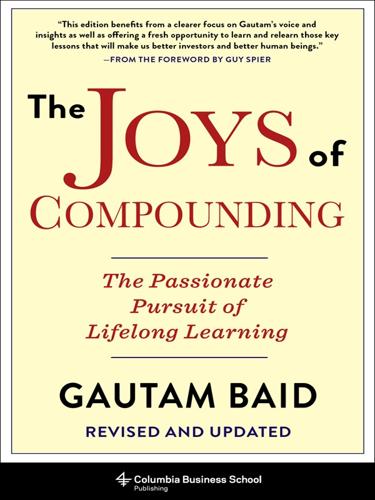
The Joys of Compounding: The Passionate Pursuit of Lifelong Learning, Revised and Updated
by
Gautam Baid
Published 1 Jun 2020
During the M&A mania of 1982, Buffett remarked that, in many of these deals, “managerial intellect wilted in competition with managerial adrenaline. The thrill of the chase blinded the pursuers to the consequences of the catch [emphasis added].”18 Big-ticket (often touted as “transformational”) M&As have low base rates of success, whereas smaller, tuck-in, or bolt-on acquisitions that share similar areas of activity have higher base rates of success. In general, M&As have a higher chance of creating value when they represent a core element of strategy and when management has a track record of disciplined and value-accretive M&A. Firms in this category are rare. Think Berkshire Hathaway, Fairfax Financial, Markel Corporation, and Constellation Software.
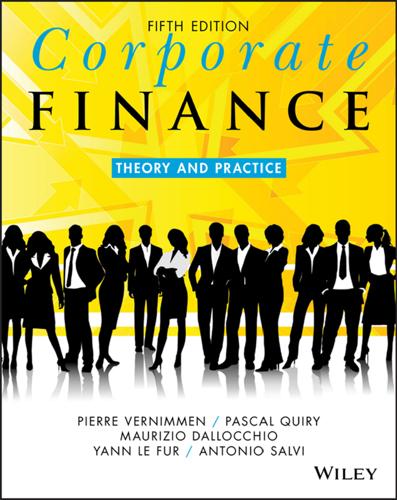
Corporate Finance: Theory and Practice
by
Pierre Vernimmen
,
Pascal Quiry
,
Maurizio Dallocchio
,
Yann le Fur
and
Antonio Salvi
Published 16 Oct 2017
A bankruptcy when cash flows generated by the operating company are insufficient to allow for enough dividends to be paid to Holdco and when debtholders and shareholders cannot reach an agreement on a capital restructuring (new equity, lower interest rates, longer repayment schedule, etc.). If the company has grown or become more profitable on the financial investors’ watch, it will be easier for them to exit. Improvement may take the form of an internal growth strategy by geographical or product extension, a successful redundancy or cost-cutting plan or a series of bolt-on acquisitions in the sector. Size is important if flotation is the goal, because small companies are often undervalued on the stock market, if they manage to get listed at all. That being said, a company whose LBO has failed as a result of an inability to pay off its debt is often in a pitiful state. The investment tap has been turned off, the most talented staff have seen the writing on the wall and have left and the remaining staff lack motivation.